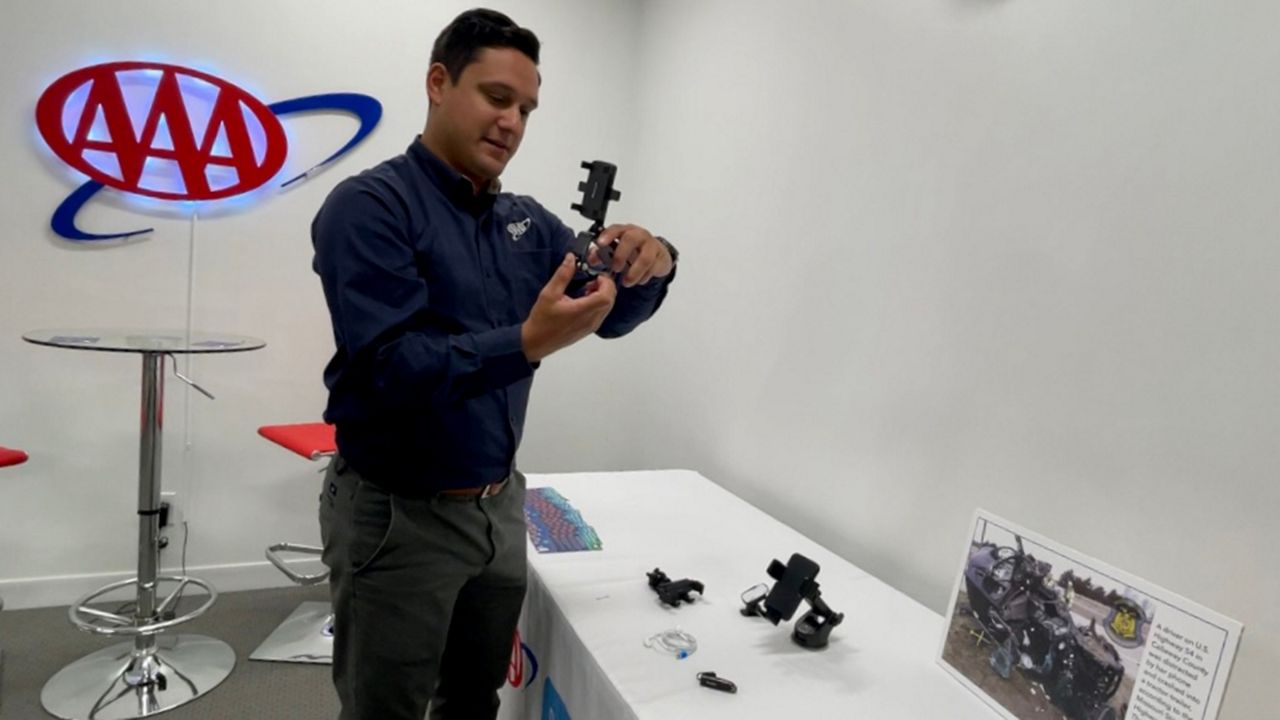ST. LOUIS — Missouri drivers are no longer allowed to hold their cellphones while their cars are in motion as a new state law took effect Monday, Aug. 28.
The “Siddens Bening Hands Free” law was signed by Gov. Mike Parson in July, which prohibits all drivers from manually typing, scrolling or holding a cellphone or another wireless device while operating their vehicles. This also includes watching, recording, posting, sending, or broadcasting a video or movie.
Senate Bill 398 allows drivers to use hands-free features, including talk-to-text, Bluetooth or speaker functions to talk, send messages and use navigation. There are some exceptions, including emergencies, according to AAA.
“Prior to this law passing and going into effect (Monday), Missouri had one of the weakest distracted driving laws in the country,” said Nick Chabarria, spokesperson for AAA.
He said Missouri was one of two states that only banned texting and driving for people under 21.
The new law “catches us up with other states,” making Missouri the 28th state to require hands-free use for drivers of all ages, Chabarria said. It is also the 49th state to prohibit manually texting and driving.
This is a secondary enforcement law, Chabarria said, but if police see a driver speeding or serving with a phone in their hand, they can cite the driver.
A first-time violation will result in a fine of up to $150 and can increase up to $500 for repeat convictions within a two-year period. Additional penalties can occur depending on the incident.
Penalties will not start until Jan. 1, 2025, which was an important aspect when trying to pass the law, according to Chabarria.
“When we were working on the law and trying to pass it that we had time to educate the public to make sure they knew about it. We weren’t trying to catch anybody off guard. We weren’t trying to catch anybody in the act,” Chabarria said.
“The law, at its core, is about educating drivers about the dangers of distracted driving and why it’s not safe to drive with your phone in your hand.”
Chabarria mentioned that the law has associated misdemeanor and felony charges if a crash was determined to have been caused by a driver on their phone and it created significant damages, injuries or death.
In order to stay in compliant with the law, Chabarria recommends car mounts that stick or clip inside of cars. He said drivers can find affordable ones on Amazo.
Drivers also can use cell phone GPS navigation and music or podcast functions.
The Missouri Coalition for Roadway Safety reports 197,564 distracted driving-related crashes that killed 801 people between 2012 and 2021.
The law is named after two Missourians who both died in car crashes. Randall Siddens, 34, died after being struck by a driver who was video chatting on a cellphone and speeding, according to the press release.
Michael Bening, 46, was struck and killed by a suspected distracted driver while trying to retrieve debris in the roadway.
Georgia adopted a similar hands-free law in 2018 where the state saw a drop in traffic fatalities by 7% in the first 18 months and real-time phone usage while driving fell 22% in the first month, according to AAA.
“We know this law can be effective. It’s going to take, of course, enforcement and education as well, but it’s definitely a start and a step in the right direction,” Chabarria said.
If a driver does need to use their phone, Chabarria recommends they pull over at a gas station or at another location to use their phone safely.
“There is research and studies that show even if you’re at a stoplight and you look at your phone, you’re still distracted for up to 28 seconds after you put your phone down,” he said.
For more information about the new law, click here.



